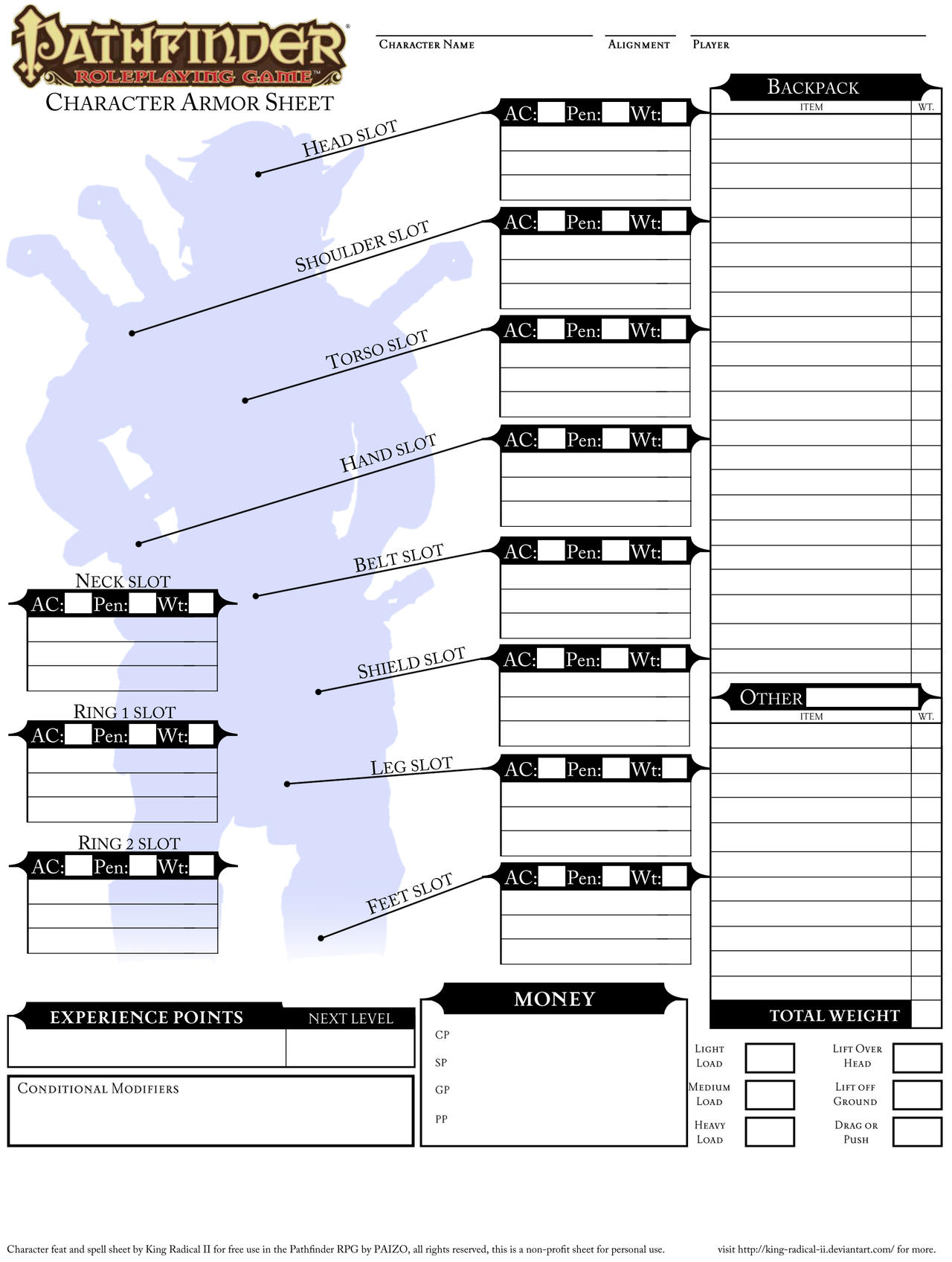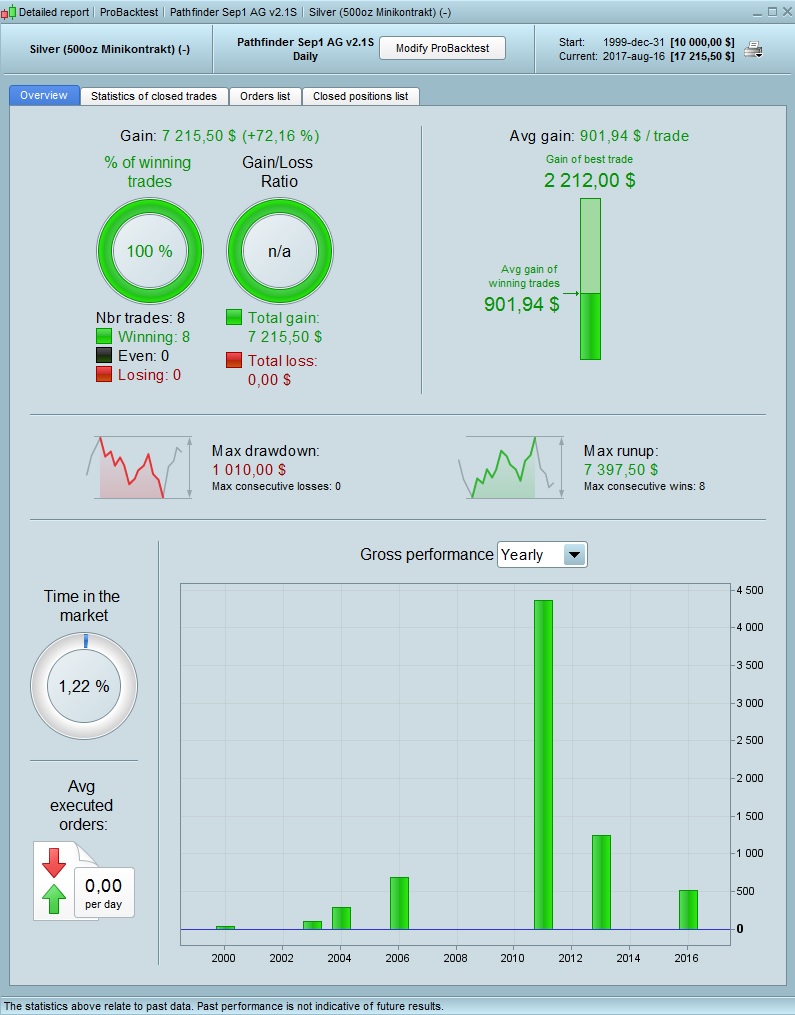Pathfinder Equipment Slots
- View Cart; Help; Pathfinder. Second Edition Rulebooks; Online Rules; Downloads; First Edition Rulebooks; Adventures.
- Headband: This slot consists of bands, headbands, laurels, phylacteries, and other non-head slot items that can be worn around the forehead. Neck: This slot consists of amulets, brooches, medallions, necklaces, periapts, scarabs, and other items that can be worn around the neck or fastened to a cloak.
Available slots followed by either “ (saddle)” or “ (horseshoes)” denote that creatures of that body type can wear magic items in the appropriate slots only as long as they are either saddles or horseshoes, respectively (for instance, a hoofed quadruped can wear horseshoes of a zephyr, but not boots of speed).

Axia Pathfinder Core PRO Broadcast Controller & VM
PATHFINDER CORE PRO BROADCAST CONTROLLER & VM OVERVIEW
See More. Do More. Control More.
With the third generation of Axia Pathfinder, the Pathfinder Core PRO Broadcast Controller and Pathfinder Core PRO VM, routing control has never been this simple...or this sophisticated.
Pathfinder Core PRO—either Appliance or VM—is a toolbox with powerful features that create efficient workflows and facility management. For one, it unifies your Axia device monitoring and control, letting you make system-wide changes from one central place—the Pathfinder Core PRO web interface. Pathfinder Core PRO simplifies routing in complex facilities, even those with thousands of audio sources and destinations, by giving the user easier, more intuitive control over audio workflows. This third generation of Pathfinder routing control lets you customize and command your Axia network with streamlined functionality, including Logic Flows—a flow-chart-style events system that makes events easier to create, adjust, and monitor in real-time. An efficient, intuitive web interface means easy configuration and monitoring from any device, and customizable user interfaces provide streamlined control over your entire Telos Alliance system. Finally, this Linux-based appliance or VM makes full use of the processor while freeing you from a Windows-based server.
Pathfinder Core PRO Broadcast Controller
Pathfinder Core PRO is a powerful and reliable 1RU appliance. The Pathfinder Core PRO Broadcast Controller is proven in years of on-air service. It brings enterprise server-class redundancy and multiprocessor, multi-threading architecture to real-time broadcast operations. Faster response, deeper event logging, and ultra-reliable monitoring and control are available in the Pathfinder Core PRO Router Controller. Access to the Pathfinder Core PRO is browser-based, so it’s PC platform-independent.
Pathfinder Core PRO VM
Broadcasters worldwide are migrating key infrastructure and processes to virtualized platforms. Whether in company data centers or third-party server farms, broadcasters in radio, television, and other digital media are finding significant benefits in equipment and process virtualization.

Axia Pathfinder Core PRO VM is the virtualized monitoring and control solution for Axia Livewire+™ AES67 facilities. Many IT departments have standardized on one or two server hardware platforms, and perhaps a single hypervisor solution. This standardization is good business practice with benefits for operations, maintenance, upgrades, and redundancy
Now, Pathfinder Core PRO VM allows broadcasters to deploy Pathfinder monitoring and control on familiar, approved hardware. Moreover, thanks to Pathfinder’s network-optimized monitoring and control protocols, Pathfinder Core PRO VM can be deployed locally or at an off-site data center. Indeed, just one instance of this VM-installable solution can monitor and control dozens of Axia broadcast facilities—over a small region or around the globe.
Today’s broadcast IT and operations teams appreciate standardization, functionality, and redundancy. Pathfinder Core PRO VM may be installed in a selection of hypervisor environments, including VMware, Hyper-V, VirtualBox, Proxmox, and Stratus.
Thanks to installation and deployment options, the VM version of Pathfinder Core PRO lends itself to centralized deployment, allowing monitoring and control of routing and Axia equipment for a network of studios and remote Axia locations.
Pathfinder Equipment Slots
Pathfinder Core PRO VML
Joining the Axia Pathfinder Core PRO family is Pathfinder Core Pro VML. The VML delivers all the same features as VM, but has a lower starting price point as it comes with 300 connections (as opposed to VM’s 1000 connections), making it perfect for a smaller system with just a studio or two. If the workflow expands, no problem. Simply apply add-on license points to the server and expand system control.
PATHFINDER CORE PRO BROADCAST CONTROLLER & VM FEATURES
Reliable, redundant, system-wide routing control
Use any modern browser on any platform to configure, monitor, and control
Linux-based with a web user interface
Provides route control and customized logic events
Graphical interface with real-time state reporting
Graphical logic gates for creation of complex logic flows
Control protocol for third-party integration, including Device Emulators
Automatic router table generation
Hardware version offers dual Gigabit Ethernet ports and dual-redundant power supplies
Virtual routing for customized views of key audio flows
Customizable user panels
Includes 1000 points for use as crosspoint or Logic Flow endpoints
Add-on licenses for additional 500 points for use as crosspoints or Logic Flow endpoints available
Add-on licenses for additional 100 points for use as crosspoints or Logic Flow endpoints also available
VML comes with 300 points for use as crosspoints or Logic Flow endpoints
PATHFINDER CORE PRO ROUTER CONTROLLER & VM IN DEPTH
PC-Free

The Axia Pathfinder Core PRO is ideal for stations that want reliable, redundant, system-wide routing control that is purpose-built. The Linux-based network-attached appliance for routing control includes a web user interface to provide route control and customize logic events. Because it uses a web interface, Pathfinder Core PRO becomes platform-independent; users can use almost any personal computing device to interface with the appliance for reliable, 24/7 unattended operation. Customizable function panels are based on HTML5 and can be accessed from almost any computing device with access to the network.
Logic Flows
Pathfinder Core PRO features Logic Flows, an all-new events system that uses logic gates for the creation of complex logic and dramatically simplifies route changes. The Logic Flows event system features a graphical flow-chart style that allows you to see the connections and manipulate them easier, as well as see state changes in real-time via the web interface. For example, if an endpoint changes, you will see those changes live via color and/or textual change on the Logic Flow graphic. Logic Flows are intelligent enough to sense the connections between different flows and present those connections graphically with a much larger array of properties that are available for use. Finally, we have added the ability to clone entire groups of object settings with one simple flow, which becomes invaluable when creating redundant logical paths. These are dramatic improvements over previous versions.
Device Emulators Control Protocol for Third-Party Integration
Because there are a variety of automation systems that don’t understand the Axia language, Pathfinder Core PRO Device Emulators allow the unit to “look like” another protocol, emulating third-party protocols and translating them into the Axia language. When Pathfinder Core PRO receives commands in a non-Axia protocol language, it then makes the requested changes to the Axia equipment, emulating a different kind of device by speaking that language. Additionally, the Device Emulators allow the user to define their commands to send and receive, so Pathfinder Core PRO can be used to control and receive commands from third-party equipment in that way as well. The user simply has to define the textual commands to watch for or send in the Device Emulator.
Easy Setup
Pathfinder Core PRO is fast, efficient, and simple to use: Just attach to your network, give it an IP address, and it automatically detects your Axia audio sources/destinations and GPIO ports. Pathfinder Core PRO searches for and finds all of the Axia equipment on the network, then automatically creates both an audio router and a GPIO router with all of the audio or GPIO sources and destinations that are discovered within that equipment, simplifying the initial configuration.
Pathfinder Core PRO also gives you peace of mind by providing distributed redundancy within your network. Multiple Pathfinder Core PRO units can be “clustered” for automatic redundant backup, and each fan-free unit has field-replaceable dual-redundant power supplies as well. As a dedicated hardware appliance, Pathfinder Core PRO gives you freedom from concerns about software compatibility, automatic OS patches, and computer hardware limitations
Customizable User Panels
In addition to advanced routing control, Pathfinder Core PRO lets users create their user panels, giving them a unique and customized look and design for features like meters and buttons. This powerful drag-and-drop tool integrates routing, logic, and device control to create a user interface that intuitively matches your facility’s unique workflow.
Virtual Routing
Aside from routing physical inputs and outputs, Pathfinder Core PRO lets you create virtual routers. For example, if a specific room in a facility doesn’t need to see the entire network of inputs and outputs, but only the ones relevant to that room, then a Pathfinder administrator can create a virtual router that only includes the sources and destinations required by that room. In addition, virtual routers can be used to marry multiple sources and destinations together into routable packages. For example, you can create a virtual source that has both an actual audio source and an actual GPIO source as part of its package. Then when you create a route with the virtual router, the audio and GPIO get routed together with one route change. This capability extends even further by allowing any property known to the system to become a source or destination in a router.
Memory Slots
Memory Slots allow you to store—and make changes based on—custom pieces of information. Memory Slots have been expanded in Pathfinder Core PRO to provide easy latching capability of any property in the system, to follow the state of any property in the system, and to build custom text by combining values from multiple slots together. This makes the use of Memory Slots more powerful than ever.
Scene Changes
Scene changes are traditionally used for making a group of route changes at once. Pathfinder Core PRO extends this functionality by allowing any change over any device Pathfinder knows about to be included in a scene. Need to route a studio to air while turning on certain console channels, dialing a Z/IP ONE codec, and sending a start message to your automation system all at the same time? A scene can do that for you.
Crosspoints
With Pathfinder Core PRO, you get 1000 points used towards sources and endpoint change blocks (within Logic Flows). Need more? You can simply buy an extension license to add more logic or more crosspoints.
Note: There are a variety of crosspoints that don’t count against the license, including GPIO and virtual-only ones. Only Axia audio sources whose streams are enabled count against the point license. Also, logic flows built within the panel designer do not count against the logic licenses.
FAQ
Is Pathfinder required to run my Axia network?
No, Axia networks are self-contained routing and mixing systems that don’t require any external control. However, if you want to automate your routing switcher, with preset scene changes, conditional routing changes, or scheduled route changes, Pathfinder will satisfy your needs.
Why would I need routing automation?
Pathfinder Core PRO lets you consolidate control of your network operations, bringing all of your equipment together under one simple interface to create the most flexible workflows imaginable. It takes all of your Axia nodes and equipment and presents them as if they were a traditional single router, so you don’t need to jump from place to place to see and manipulate your facility’s routing infrastructure.
Can I trigger routing changes from studio consoles?
Yes. There are a variety of drop-in modules for our popular Axia Fusion consoles that you can use to change single routes or execute predefined salvos based on time-of-day or GPIO. Rack-mount panels make it convenient to map Pathfinder routing commands to hardware buttons located elsewhere, too—like your TOC, engineering office, or communications room.
Can Pathfinder sense dead air?
Yes, there’s a Silence Detect function, including Silence, Audio Presence, and Clipping on Axia sources and destinations. With it, you can pick any audio stream in your network—say, your Program-1 output—and monitor it for signal loss. Once your “silence” condition is met, Pathfinder can take action by switching to a different audio input, flashing an alert to talent, or sending you an e-mail.
Can Pathfinder react to a system command? I’m thinking about EAS activation…
Sure. You can define Logic Flows, in which Pathfinder Core PRO monitors GPI channels for external commands and takes action when predefined conditions are met. So you could use a logic flow to watch the GPIO output of your EAS decoder, and switch your main program output, along with your HD channels, to be fed by the output of your EAS gear until the GPI is released—upon which audio inputs are returned to their normal sources.
Additionally, Pathfinder Core PRO provides generic Device Emulators that allow you to define custom commands to send and watch for on a tcp port. So your automation system can send any command you desire, and Pathfinder Core PRO can detect that command, act upon it with any action you see fit via a Logic Flow and reply with another custom command.
Finally, Pathfinder Core PRO provides an advanced control protocol that exposes everything you might want an outside system to control.
Does Pathfinder Core PRO support clustering, like PathfinderPRO software?
Yes. You can attach two Pathfinder Core PRO devices to your network for complete routing automation redundancy.
Does Pathfinder Core PRO support SNMP, AES70, or other protocols?
Pathfinder Core PRO supports Axia and other protocols to allow you to create highly customized workflows. As the industry is learning the importance of common tools, open protocols are becoming hot topics. Pathfinder Core PRO was designed with an open architecture to easily incorporate other protocols. Pathfinder Core PRO includes Device Emulators (protocol translators) with multi-protocol support that can be used to send and receive any data.
PATHFINDER CORE PRO ROUTER CONTROLLER & VM SPECIFICATIONS
Power Supply AC Input
Pathfinder Equipment Slots Poker
100VAC to 240VAC, 50Hz to 60Hz, IEC receptacle, internal fuse
Power consumption: 100 Watts, auto-ranging
Pathfinder Equipment Pdf
Operating Temperatures
0 degrees C to +50 degrees C, <90% humidity, no condensation
Dimensions
W19.00in (48.0 cm), H 1.75 in (4.40 cm), D 15.50 in (39.4 cm)
1RU
Unless you’re the GM, the first thing you need to do when playing Pathfinder is create your character. It’s up to you to imagine your character’s past experiences, personality, and worldview, and this will set the stage for your roleplaying during the game. You’ll use the game’s mechanics to determine your character’s ability to perform various tasks and use special abilities during the game.
This section provides a step-by-step guide for creating a character using the Pathfinder rules, preceded by a guide to help you understand ability scores. These scores are a critical part of your character, and you will be asked to make choices about them during many of the following steps. The steps of character creation are presented in a suggested order, but you can complete them in whatever order you prefer.
Many of the steps instruct you to fill out fields on your character sheet. The character sheet is designed to be easy to use when you’re actually playing the game—but creating a character happens in a different order, so you’ll move back and forth through the character sheet as you go through the character creation process. Additionally, the character sheet includes every field you might need, even though not all characters will have something to put in each field. If a field on your character sheet is not applicable to your character, just leave that field blank.
Pathfinder Equipment Slots
All the steps of character creation are detailed on the following pages; each is marked with a number that corresponds to the sample character sheet, showing you where the information goes. If the field you need to fill out is on the third or fourth page of the character sheet, which aren’t shown, the text will tell you.
Pathfinder Monk Equipment
If you’re creating a higher-level character, it’s a good idea to begin with the instructions here, then turn to page 29 for instructions on leveling up characters.